Are you a person who has always loved building and modifying things with your own hands? Do you want to share your passion for do-it-yourself (DIY) projects with the world and make money from your DIY skills?
If so, starting a DIY blog could be the perfect way to turn your passion for DIY into a profitable business. In this article, I will share tips on how to start a DIY blog and make money online.
If you have any questions along the way, just drop a comment and I will help you out.
So let us jump right in.
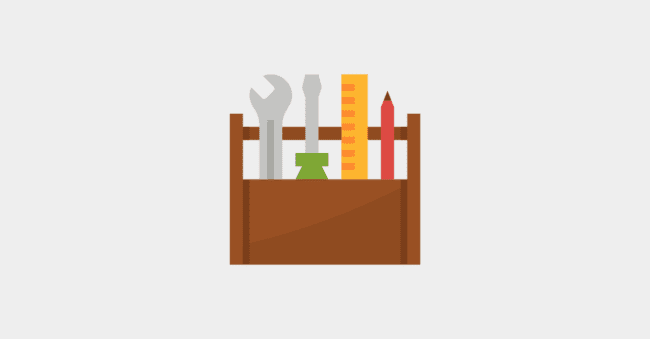
How to Start a DIY Blog in 7 Steps
- Define Your DIY Blogging Goals
- Choose a DIY Niche
- Pick & Register a Blog Domain Name
- Setup WordPress
- Write & Publish Blog Posts
- Promote Your DIY Blog
- Monetize & Make Money
1. Define Your DIY Blogging Goals
Before you can start a DIY blog, it’s important to have clear goals in mind. For example, how much time and money do you want to devote to your DIY blog? What are your revenue goals? Do you just want to make some extra cash on the side or are you looking to eventually turn your blog into a full-time business?
Once you have these goals defined, you will be able to create a realistic plan for how to achieve them.
What is a DIY Blog?
A DIY blog, or “do-it-yourself” blog, is a type of blog that focuses on sharing how to guides and tutorials for all kinds of DIY projects. The blog typically has tutorials to create, build, modify, repair, or decorate things by oneself without help from expert professionals.
Why Start a DIY Blog?
There are many reasons why starting a DIY blog can be a great way to make money online.
For one, there is a huge demand for how-to content on the internet today. Whether it’s how to build an outdoor garden, how to make your furniture, or how to pick out the perfect wedding dress, people are constantly searching for step-by-step instructions that show them how to do something themselves.
In addition to this demand from readers, a DIY blog can be really profitable because there are many ways to monetize this type of blog. For example, you can sell advertising, promote affiliate products, or even create and sell your own physical or digital products.
The benefits of starting a DIY blog include:
- Become an authority in the DIY space
- Make money online blogging about DIY
- Connect with other influencers in the DIY space
- Share your passion for DIY
- Become a DIY influencer
How much money can you make from DIY blogging?
You can make $15-$25 for every 1000 ad views on your DIY blog. An SEO optimized blog post can get anywhere between 300 to 1000 visits per month. So, a DIY blog with 100 blog posts can make as high as $2500 every month. You can make even more money if you monetize with affiliate marketing and digital products.
2. Choose a DIY Niche
Once you have set your blogging goals, the next step is to choose a niche within the world of DIY that interests you and that aligns with your goals. A niche is a specific topic within DIY that your blog will focus on.
Why choose a niche?
Choosing a niche is important for two main reasons. First, it will help you focus your content and make it easier to attract readers who are interested in what you have to say.
Second, once you’ve built up an audience in a specific niche, it will be easier to monetize your blog since you’ll already have an established group of potential customers tightly focused on a specific niche.
If you blog about everything, then your blog content will become diluted and won’t have the depth of content that will draw a specific group of readers.
Finding Your Ideal Niche
The best way to find a niche that’s right for you is to consider your interests and passions. What are the things that you love to do in your spare time? What topics do you enjoy reading about or researching? These are all clues that can help you zero in on an ideal niche.

Another way to come up with ideas for your niche is to think about what problems people are trying to solve. For example, if you’re interested in kitchen remodeling, you could start a blog that helps people create a minimalistic kitchen. Also, think about who is your target audience.
Some examples of popular DIY niches include:
- Home Decor
- DIY Gifts
- DIY Fashion
- DIY Kitchen
- DIY Toys
- Crafts
- Crochet
- Soap Making
- Weaving
- Candles
- Knitting
- Woodworking
- Sewing
- Painting
- Embroidery
- Jewelry Making
We have dedicated guides for the following niches:
- How to Start a Home Decor Blog
- How to Start a Craft Blog
- How to Start a Crochet Blog
- How to Start an Interior Design Blog
Come up with a few niche ideas.
Examples of DIY Blog
Sometimes looking at other DIY blogs will help inspire ideas of your own. Here are some of the more popular examples of DIY blogs:
1. Sawdust Girl
The blog covers woodworking, renovation, and cabinet building. The blog has easy-to-follow tutorials and guides for doing really complex projects.

2. Remodelaholic
This blog focuses on home remodeling, home decor, and interior design projects. The blog focuses on reducing, reusing, recycling, and remodeling on a tight budget.

3. DIY Diva
This is a blog by Kit who single-handedly renovated her old farmhouse with a small farm attached. She writes extremely helpful guides for others who are doing similar projects.
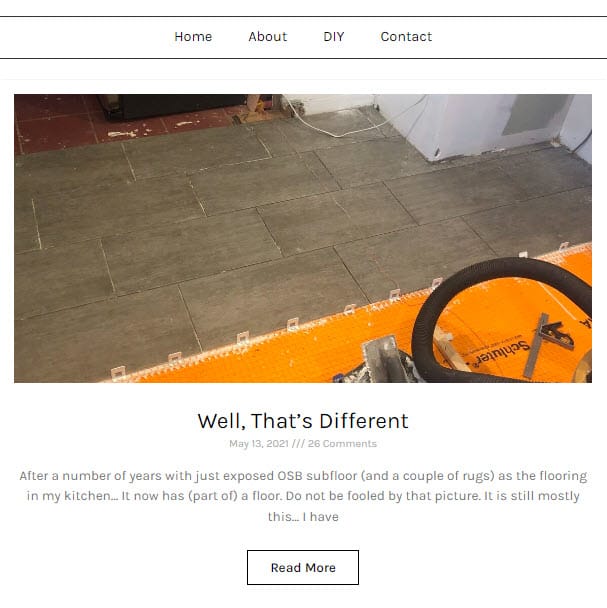
4. A Beautiful Mess
The focus of this blog is on creative projects, DIY, recipes, and entertaining ideas. The blog also has a shop where you can buy products related to the content on the site.
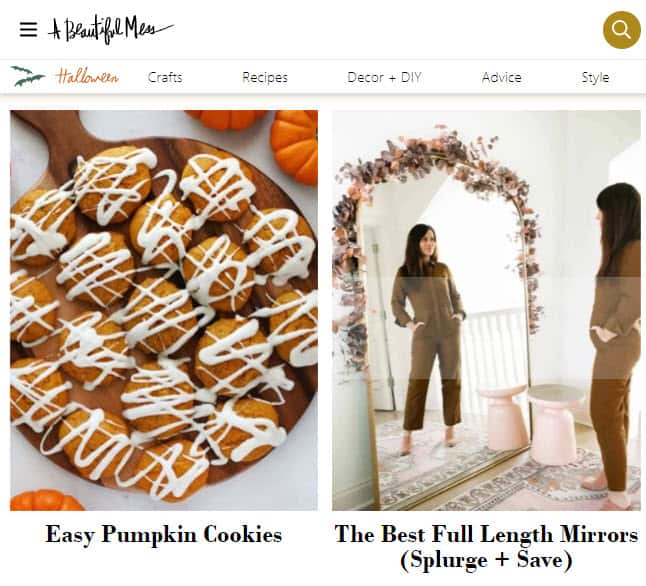
5. Centsational Style
This blog is all about home decor, DIY projects, budget remodeling, and more. The blog is written by Kate who has a lot of experience in interior design and home improvement.
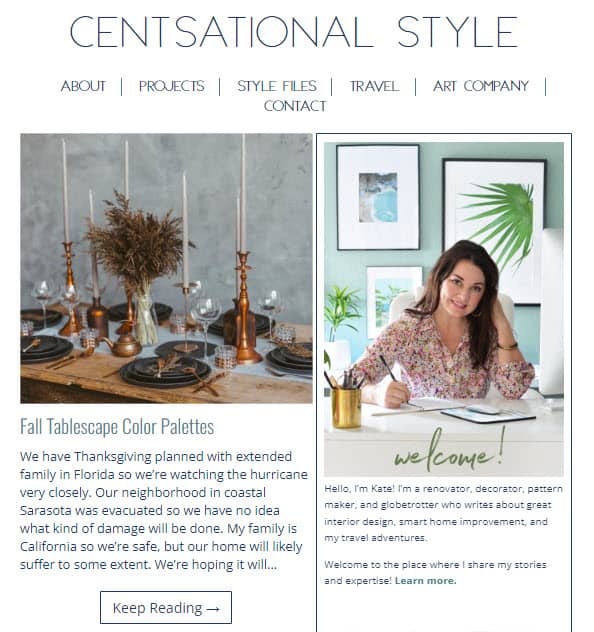
3. Pick & Register a Blog Domain Name
Once you have chosen your niche, it is time to brainstorm a few names for your DIY blog.
We recommend you keep your DIY blog name to two words (Example: Sawdust Girl). One of the two words should be a keyword from your niche. The other word can be something that makes your website brandable. For example, our blog teaches people how to make passive income, so we have named it Passive Book.
Here are some of the words that you can mix and match into your blog name:
- DIY
- Home
- Project
- Decor
- Craft
- Handy
- Decorate
- Decorating
- Handmade
- Remodel
Use a Business Name Generator to brainstorm the name of your blog.
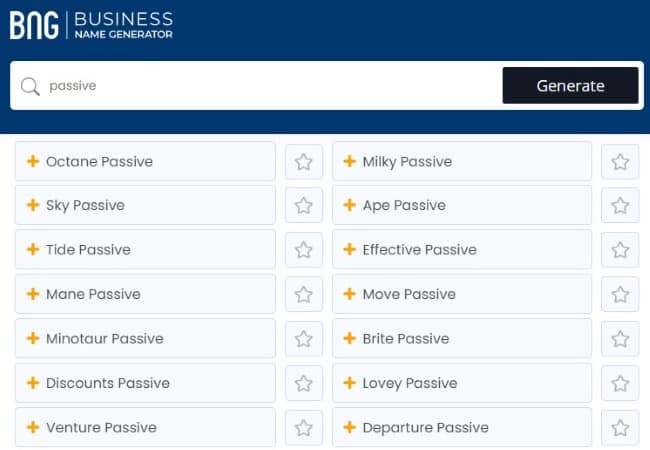
You can also use your own name for your blog. But if you ever plan to sell your website in the future, it is much more difficult to transfer your brand to the buyer when it is your name.
Check Domain Name Availability
After you have brainstormed a few names for your DIY blog, you should check if the .com domain name is available.
A domain name is the address of your website. It’s what you type into a web browser to get to your website. For example, our domain name is PassiveBook.com. It is your blog’s name followed by .com.
You must check if both the .com domain name and the social media handles are available. You can use Namechk to check the availability of both your domain name and social media handles.
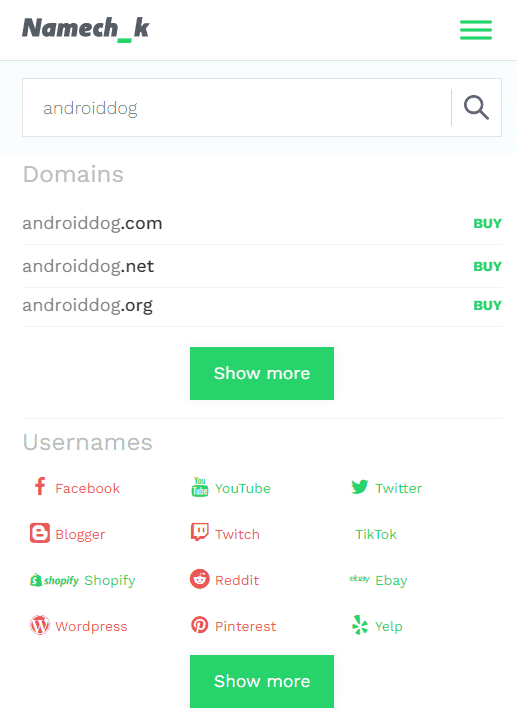
Here are a few things to keep in mind when selecting a domain name:
- Choose a .com domain name. 86% of the internet uses .com, so your visitors are likely to try visiting your blog by typing .com. Avoid other extensions like .net or .org.
- Don’t include hyphens and numbers.
- Do not use words with multiple spellings (for example colour vs color).
- Shorter domain names are better. Try to keep it under 12 characters.
- Spelling & Pronunciation should be easy and intuitive.
- It should be easy to remember.
- Avoid words that can be misread together. For example, therapistjohn.com can be read as Therapist John or The Rapist John.
- Make sure it’s not trademarked or copyrighted by someone else. The AI writing software Jarvis.ai had to rebrand to Jasper.ai because Marvel sued them for the Iron Man reference. Lawsuits will happen once your blog is established.
Register a Domain Name
Once you decide your domain name it is time to register it.
You should register your domain with NameCheap because you will get domain privacy for free. Other providers charge $12 per year for domain privacy. Without domain privacy, your name, home & email address will be accessible to the public.
Step 1: Go to NameCheap. Enter your domain name with the .com extension.

Step 2: Select the .com extension and click the Add to Cart button.
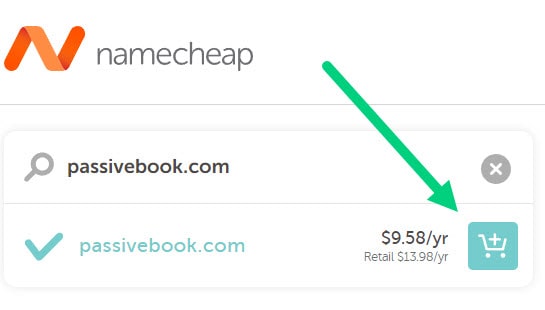
Step 3: After adding the domain to the cart, click on the Checkout button.
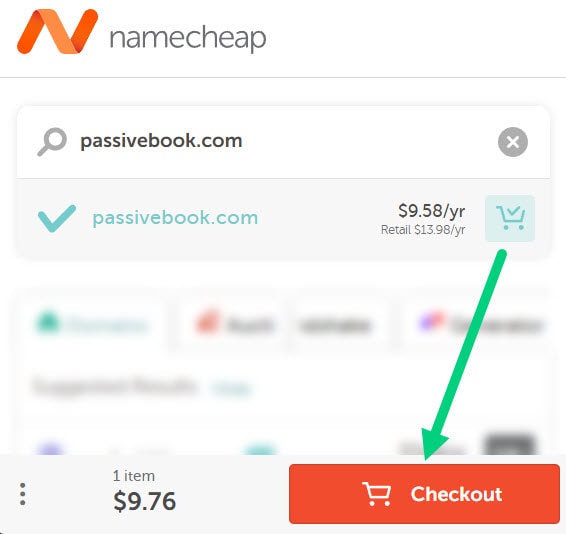
Step 4: Enable Domain Privacy that comes for free along with auto-renew. You don’t need any other paid addon.
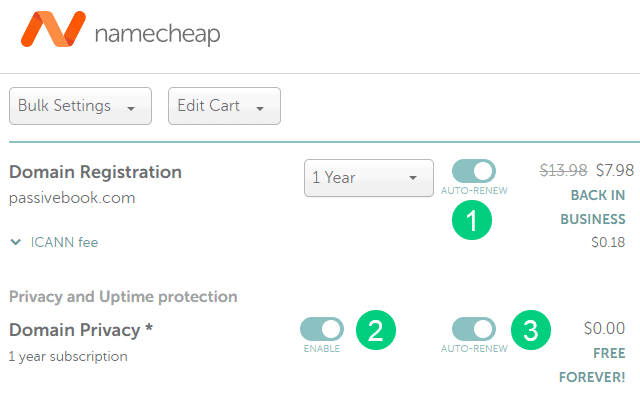
Step 5: Click on Confirm Order. Pay to complete your purchase.
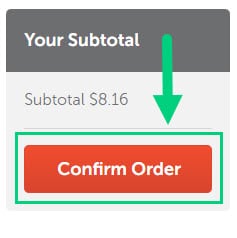
Step 6: Log in to Namecheap and click on Domain List ❶ in the left sidebar and then click Manage ❷ next to the domain you just purchased.
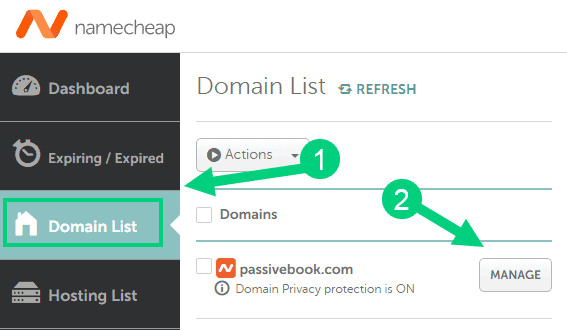
Step 7: Under the Nameservers section, select “Custom DNS” from the dropdown ❶. Then enter the following two nameservers ❷ ns1.bluehost.com and ns2.bluehost.com as shown in the image. Then click the green tick ❸ to save. If you use a hosting provider other than Bluehost, enter their nameserver values in this step instead.
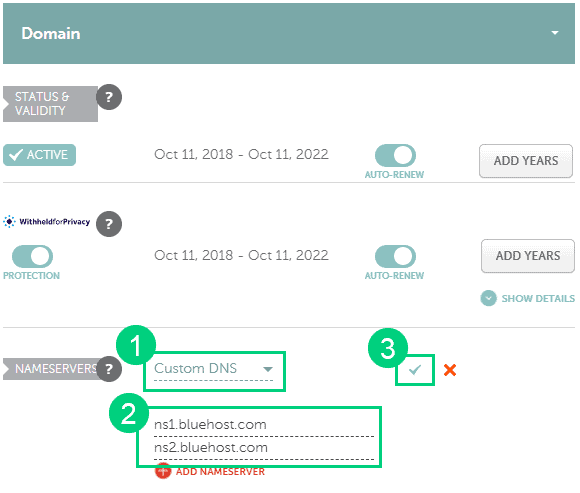
Can I get a free domain name?
Your web hosting provider might give you a free domain name for one year but they charge $12 for domain privacy which is free in Namecheap. From the second year, you will pay for both the domain and privacy which will cost you more than $20+. So it is cheaper to just register your domain with Namecheap from the beginning. Also using different companies for web hosting and domain registration will allow you to easily switch your blog host later without transferring domains.
Can I change the name of my blog later?
You will lose your search engine rankings if you change your blog’s name once it gets links from other websites. It will take as long as a year or more for you to regain the lost traffic. It is possible to mitigate problems by having proper redirects. But you will have to renew both your old and new domains every year. So try to avoid changing your blog’s name once it is established.
4. Setup WordPress
The next step is to get your blog up and running in WordPress.
WordPress is a free and open-source content management system (CMS) that you can use to create your blog.
Why Choose WordPress.org?
There are many blogging platforms but the self-hosted wordpress.org powers 70% of blogs on the internet. 42% of all websites on the internet use WordPress.
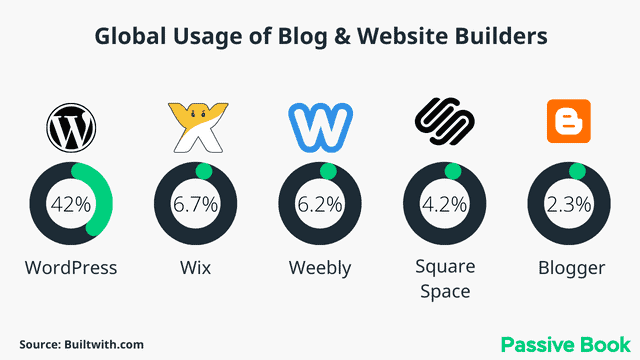
There are several advantages to using WordPress for your DIY blog:
- It’s easy to use and beginner-friendly.
- There is a huge selection of free and paid themes that you can choose from.
- WordPress has a wide variety of plugins (free and paid) that you can use to enhance the functionality of your website.
- You own your content when it’s hosted on WordPress.org, unlike free platforms or social media networks like Facebook or Tumblr.
WordPress.org vs WordPress.com
There are two types of WordPress: WordPress.org and WordPress.com.
WordPress.com is a free hosting platform that hosts your website for you, but it also comes with some limitations.
Some of the disadvantages of using WordPress.com instead of self-hosting:
- WordPress.com does not allow you to monetize your blog in any way
- You do not own the content and can be removed without warning or reason
- You cannot install plugins and themes.
WordPress.org on the other hand is a self-hosted version of WordPress. This means you have to get your own server to install WordPress. However, you will have complete control of your blog and how you monetize it. You can install any plugin and customize it however you want.
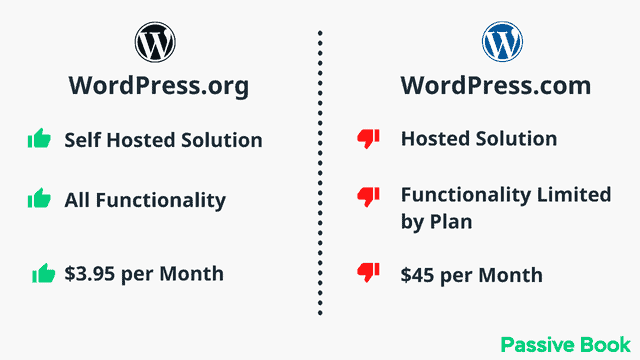
Why Avoid Free Blogging Platforms
Many bloggers start out with free blogging platforms like Tumblr or Blogger. However, these platforms come with a lot of limitations and don’t do well in search engines because they are often used by spammers and low-quality blogs. Some platforms do not allow you to monetize your blog in certain ways.
Your blog can be deleted overnight for no reason. You will only see the following screen without any way to retrieve your blog:

If you’re serious about building a profitable DIY blog, it’s best to avoid using free blogging platforms and instead opt for self-hosting on WordPress.org.
How much does it cost to start a DIY blog?
It will cost you $2.95 per month to host your WordPress DIY blog in Bluehost. A domain will cost you $12/year. So that is a total of $4.2 per month, which is less than the price of Netflix for all the unlimited features that a self-hosted WordPress blog has to offer.
What to do if you already have a free blog?
Migrating to WordPress from another platform can be a daunting task. But with the help of the free import plugin, it can be a breeze. This plugin quickly and easily imports all your data including posts, comments, pages, and images.
Install WordPress in Hosting
Hosting is the foundation of your website. You need a host to install WordPress and run your blog. A host is a company that provides server space for you to store your website files. When someone visits your blog in a browser, the blog post, files, and images are transferred from the web host to your visitor’s browser.
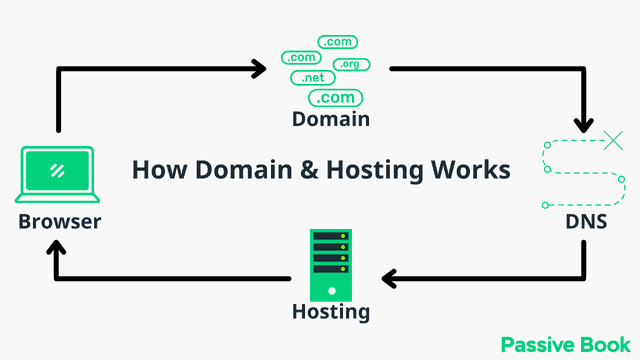
For this guide, we will use BlueHost as our web host. It is a cheap hosting that is extremely easy for beginners to set up. If you use any other web host, the steps will be the same but the user interface may be slightly different.
1. Go to BlueHost using this link to get a special discount. Select WordPress > WordPress Hosting from the top menu.
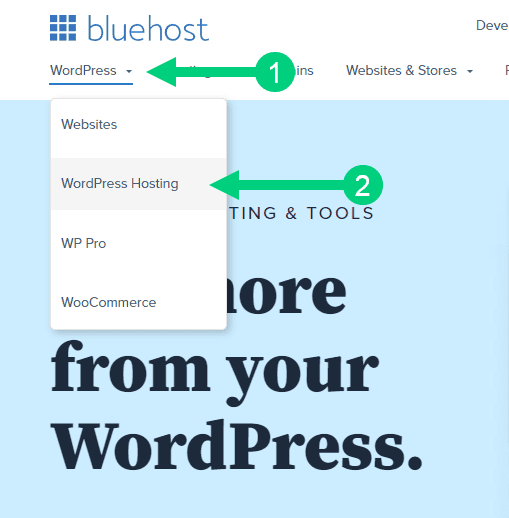
2. Click on the button you see on this page and you will be taken to the pricing section.
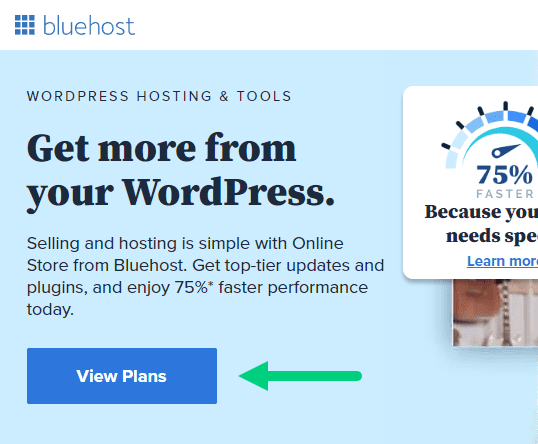
3. Select the Basic Plan. You can upgrade to a different hosting plan as you grow.

4. If you already have a domain name that you purchased with Namecheap you can put that in the “Use a domain you own” ❶ section. If you don’t have a domain name yet, choose the “Create a New Domain” ❷ to purchase a new domain.
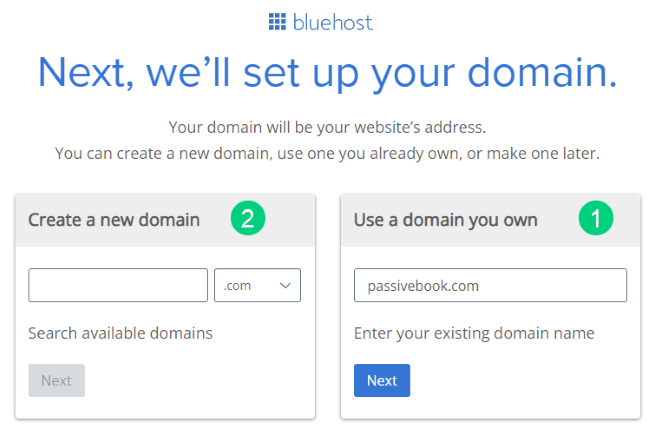
5. In the next screen, enter your information. Uncheck all package extras. If you purchase your domain through Bluehost instead of Namecheap, you may want to enable Domain Privacy. You won’t see the Domain Privacy option if you bought your domain through Namecheap. Namecheap will give you this Domain Privacy for free.
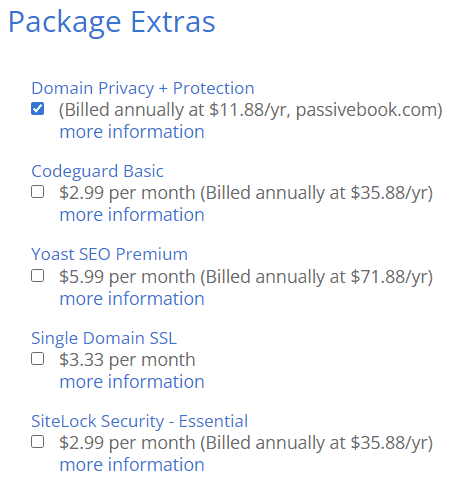
6. Once you have successfully paid, you will be prompted to set a password. Click on the “Create your Password” button.
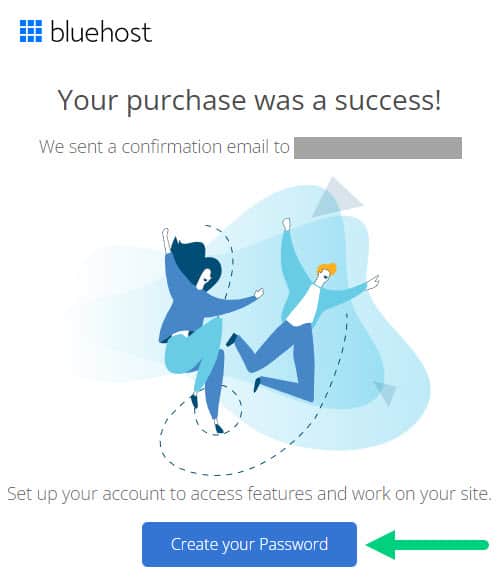
7. Enter your password and create your account. If you lose this password, you can reset it.
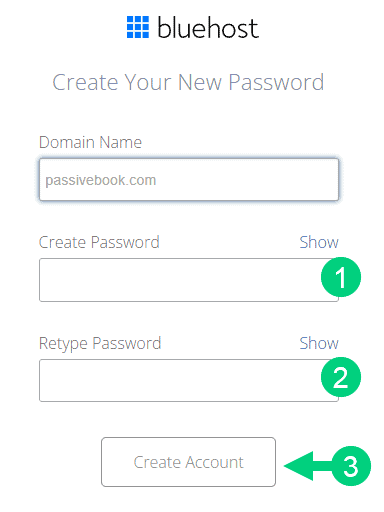
8. After you set your password, log in to Bluehost.
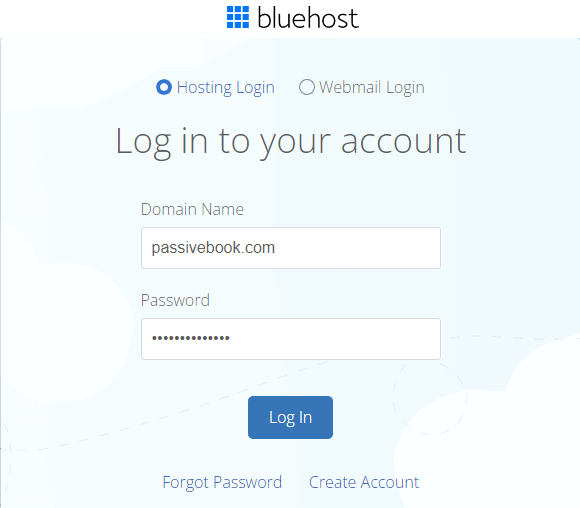
9. Click on the Create your website button on the following screen. This will start a Bluehost Wizard, just click Skip this step wherever possible.

10. On the following page, click “No help needed” or “Skip this step”. We don’t want Bluehost to limit our customization options.
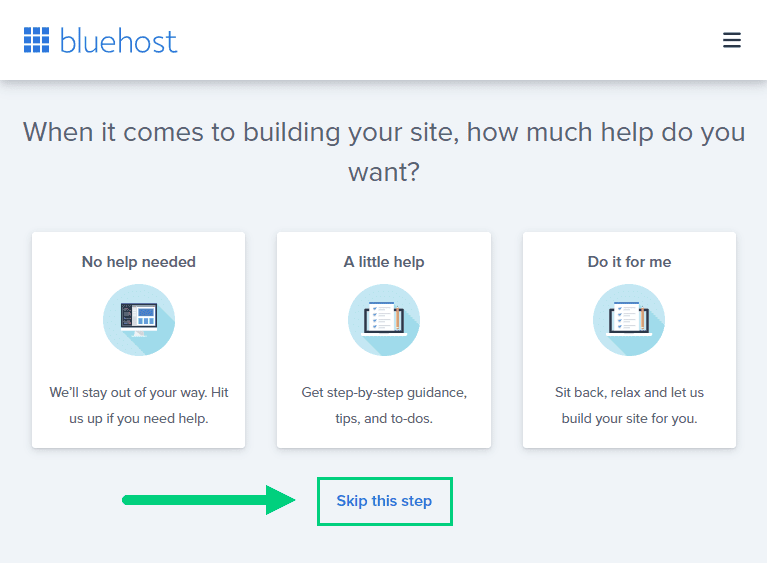
11. On the next page, you will be asked about the purpose of your website. You can choose from any of the available options.
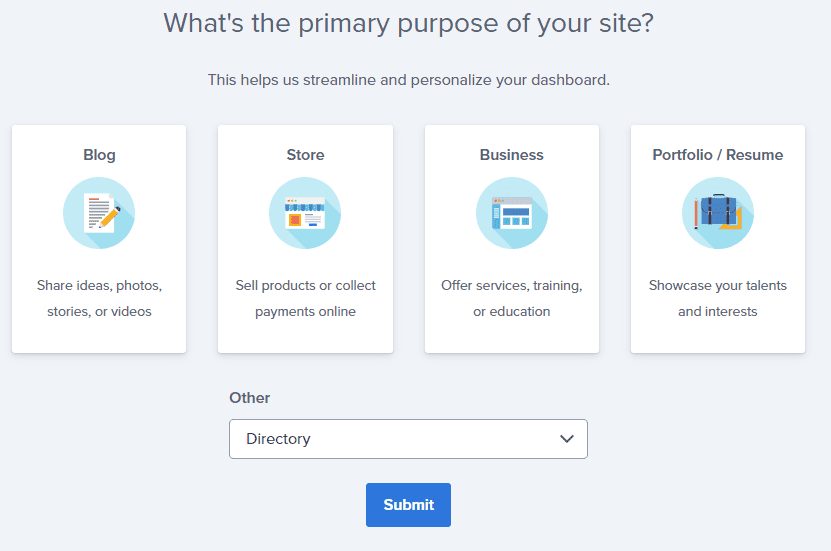
12. On the next page, click Skip this step.

13. On the following page, enter the blog’s name and tagline. You can change this later so feel free to click “Skip this step” or enter something as a placeholder and click Continue.
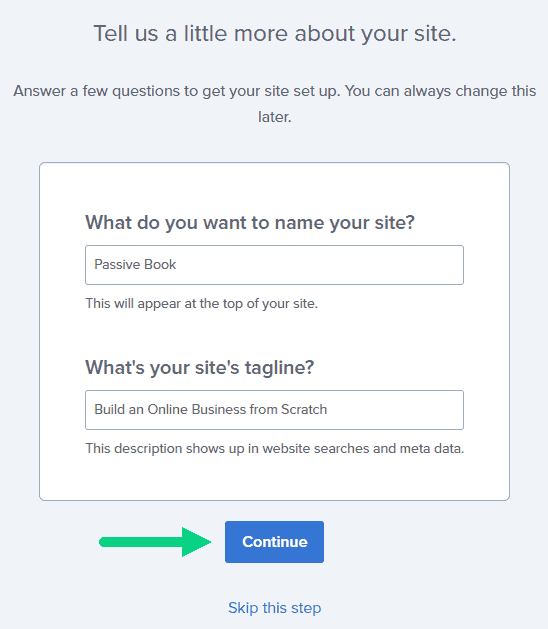
14. Finally you will be asked how you want to build your website. Choose “Limitless customization” to have all the options.

15. You can see your blog by going to yourdomain.com. Go to the Bluehost dashboard and click on the My Sites tab ❶ in the left sidebar and click on the “Manage site” button ❷.
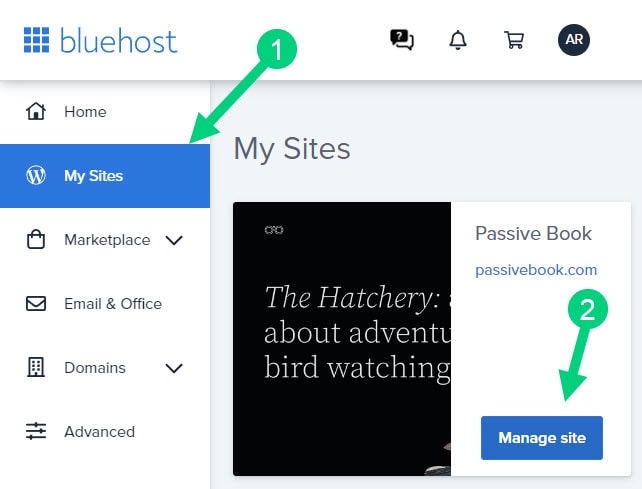
16. Your WordPress site has separate login credentials different from the ones you use to log into Bluehost. You can use this to log in to the WordPress dashboard directly without logging into Bluehost. To get this:
❶ Click on Users on top.
❷ You will be able to see your username and email that you can use to log in to WordPress.
❸ If you click on the three dots you will see the option to Reset your password. ❹
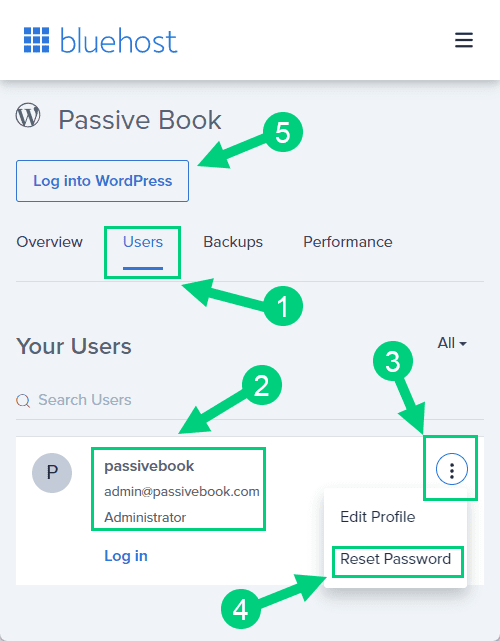
You can log into WordPress from the Bluehost dashboard by clicking the Log in to WordPress button ❺. But it is not recommended you rely on this as your primary login method because you will get locked out of your site if you ever change hosting providers.
17. You will be taken to the WordPress dashboard where you can reset your password ❶. If you don’t like the username Bluehost created for you, you can Add a New User ❷.

18. If you are adding a new user make sure you specify the user role as Administrator ❶. You can log in as the new user and safely delete the default user created by Bluehost.

Congratulations! You have successfully set up WordPress.
Configure WordPress
Now that you have the basic version of WordPress installed, it is time to customize it to make it look and feel the way you want.
Login to WordPress Dashboard
Visit yourdomain.com/wp-admin to access the WordPress dashboard.
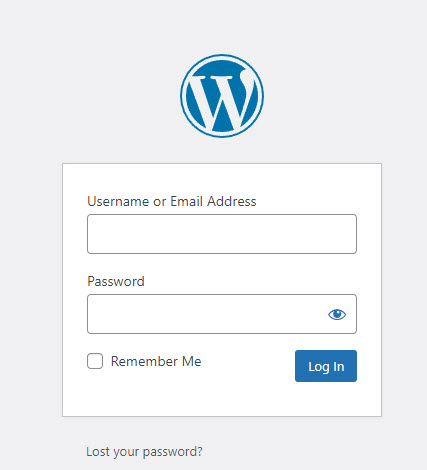
The WordPress Dashboard is the main area where you will manage your blog. From here you can add new posts, pages, and images; edit your settings; change your theme; and more.
Use the Email and Password you provided during installation to log in to your WordPress dashboard. If you don’t have a password, use the “Lost your password?” to generate a new password.
Install WP Themes
A WordPress Theme is a collection of files that dictate the design and layout of your website. When you install a WordPress Theme, it completely changes the look and feel of your website.
Your new WordPress blog will be installed with a default blog theme that doesn’t look very great.
To install a new WordPress Theme:
Go to Appearance > Themes > Add New in your WordPress dashboard.
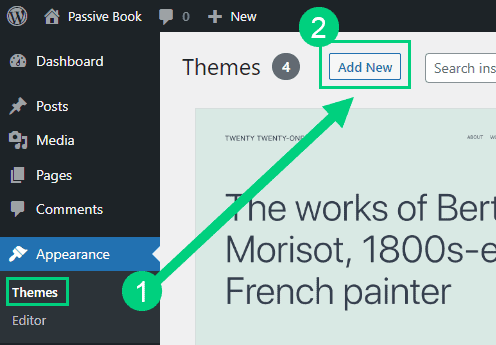
Use the search to find a theme that you like ❶. Before you install the theme, you can see a demo of the theme and learn about its features from the preview screen ❷. If you like the theme, you can install it by clicking the install button ❸. You can also upload a theme from a file on your computer ❹.

Once installed, click the Activate button to enable the theme.
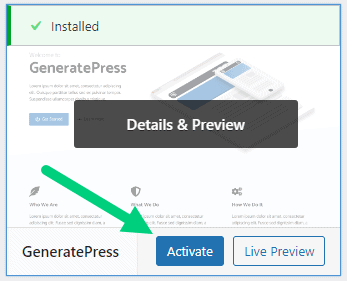
Although you can use a free theme (there are thousands of free themes available), we recommend using a premium theme.
Premium themes not only reduce your website’s load time but also help you customize your website to your heart’s desire.
Here are the premium themes we recommend:
There are also several custom-made DIY blog themes. These themes tend to be bloated with poor code which will slow down the performance of your website. We suggest getting one of our recommended themes for a fast website with unlimited customization possibilities.
Install WP Plugins
A WordPress Plugin is a software application that adds features or functionality to WordPress. There are over 50,000 plugins available for free on the WordPress.org plugin repository.
There are plugins to do just about anything you can imagine, from adding social media buttons to your blog content to creating a contact form to adding a photo gallery.
Too many wordpress plugins can slow down your blog site. So before you install new plugins, it will be worth clearing out any existing plugins that your hosting provider installed by default.
Plugins first need to be deactivated before they can be deleted.
❶ Go to WP Admin > Plugins > Installed Plugins
❷ Click on the checkbox to select all plugins.
❸ Select Deactivate from the drop-down.
❹ Click Apply.
❺ Repeat the above steps but select “Delete” instead of “Deactivate” from the dropdown in ❸ to delete all the deactivated plugins.
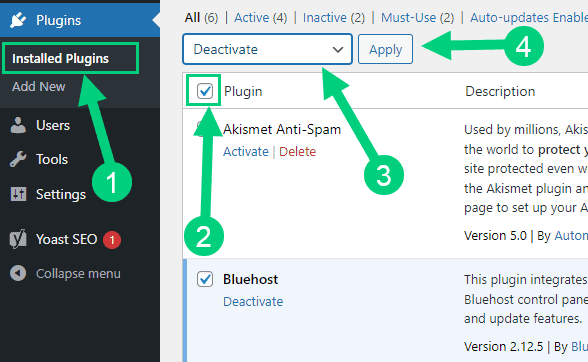
To install new plugins go to the WP Admin > Plugins > Add New.

On the plugins page:
❶ Search for the plugin you want in the search bar
❷ Click Install Now. Once you install the plugin, you must also activate the plugin for it to be enabled.
❸ If you are installing a paid plugin you can upload the plugin instead.
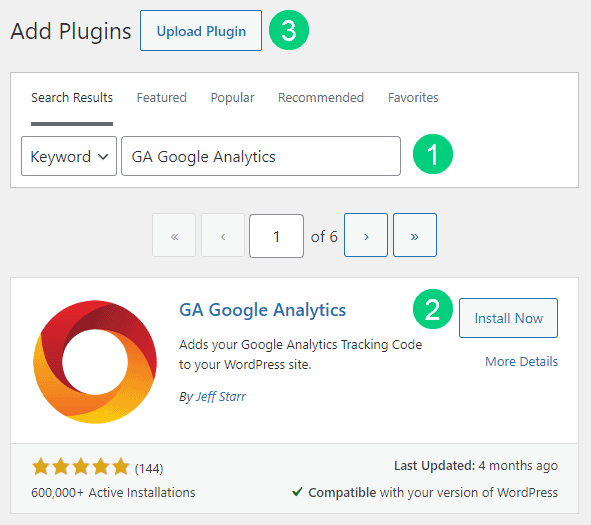
There are many different DIY blog plugins that you can install, but here are the ones which we recommend:
Backup Plugin
A WordPress Backup Plugin creates backups of your website, so you can restore it if something goes wrong. Backup plugins are important because they help you protect your data and keep your website safe.
Recommended Plugin: WPVivid (paid) or UpdraftPlus (free).
SEO Plugin
A WordPress SEO Plugin helps you improve your website’s search engine ranking. By default, WordPress is not very friendly to search engines. An SEO plugin will help you fix that by adding the necessary code to your website’s header and footer.
Recommended Plugin: RankMath (paid).
Google Analytics Plugin
A WordPress Google Analytics Plugin helps you collect data about how your website is being used. This data can then be used to improve your website’s performance.
Recommended Plugin: RankMath (paid) or GA Google Analytics (free).
Cache Plugin
A WordPress Cache Plugin stores a copy of your website’s data so that it can be served faster to your readers. This is important because the more people visit your website, the slower your website will become.
Recommended Plugin: WP Rocket (paid).
Page Builder Plugin
A WordPress Page Builder Plugin allows you to create custom pages and posts with drag-and-drop ease.
Recommended Plugin: Thrive Architect (paid).
Security Plugin
A WordPress Security Plugin helps protect your website from hackers and malware.
Recommended Plugin: Wordfence (free).
Social Media Plugin
A WordPress Social Share Plugin helps you share your blog posts on social media platforms such as Facebook, Twitter, and LinkedIn.
Recommended Plugin: Easy Social Share Buttons (paid).
Email List & Lead Generation Plugin
A WordPress Email Opt-in Form Plugin helps you collect email addresses from your website’s visitors. This data can then be used to build an email list that you can use to market to your subscribers.
Recommended Plugin: Thrive Leads (paid).
Customize WordPress
Once you have installed your theme and plugins, it is time to customize the wordpress blog platform:
Change Colors, Fonts & Spacing
You can set the font, colors, and spacing by going to Appearance > Customize in your WordPress dashboard. Premium themes like GeneratePress allow you to customize every aspect of your blog.
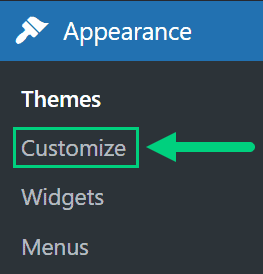
Check out our Blog Fonts & Typography guide to choose the right font and typography settings for your blog.
Add Your Logo
Get a logo designed for your blog from Fiverr. Then set the logo of your blog by going to Appearance > Customize in your WordPress dashboard. A logo is not required for a successful blog but it can definitely help appeal to your target audience.
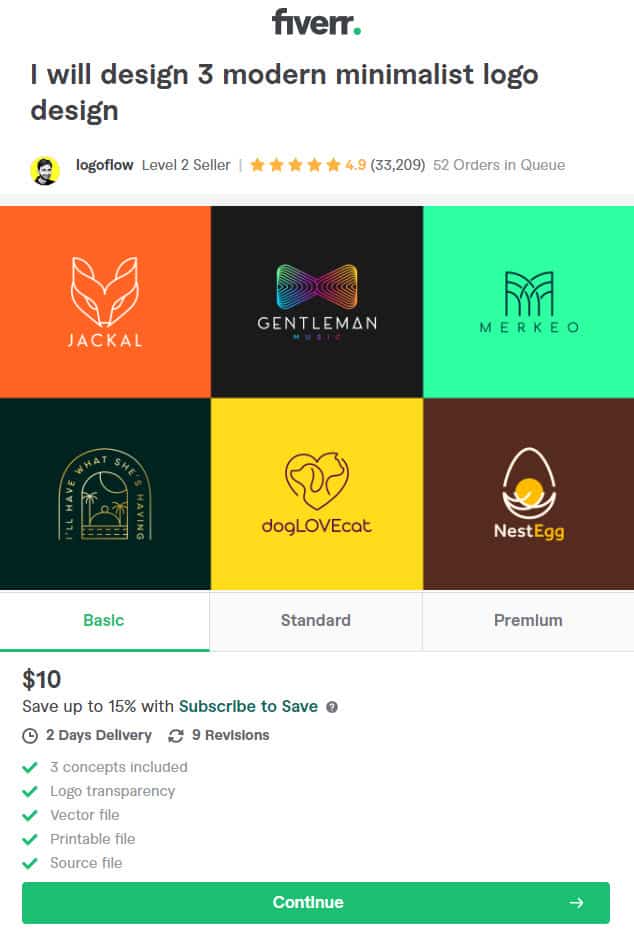
Change Favicon
Favicon is the image that appears in the browser tab and bookmarks. Set the Favicon from the Appearance > Customize section of the WordPress dashboard.

Create Menus
The header and the footer menu can be set from the Appearance > Menus in your WordPress blog dashboard.

You can nest menu items so that it appears as a dropdown menu ❶. You can use the menu as your primary or secondary navigation menu ❷. Don’t forget to save your menu ❸.
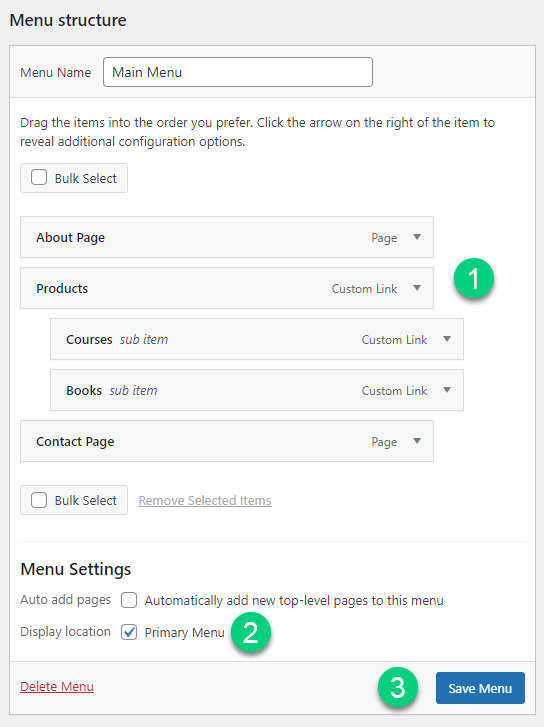
Create Widgets
If you have a sidebar, you can add widgets to it. Go to Appearance > Widgets in your WordPress admin dashboard.
Check out the list of the most useful Blog Widgets and how to add them to your blog.

Set Title & Tag Line
The next step is to change your General Settings. Go to Settings > General in the WordPress Admin area.
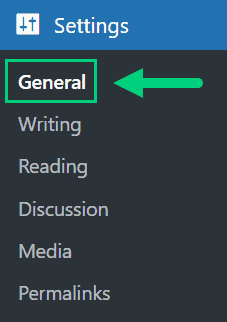
You can set your Site Title, Tagline, and Time Zone from this screen.
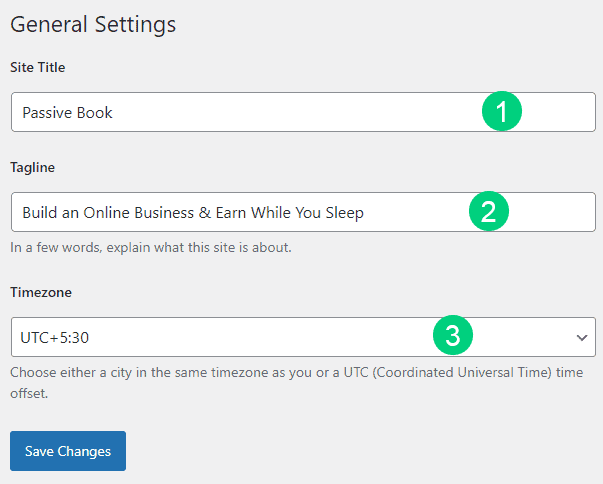
Set Permalinks
The ideal URL structure for SEO is yourdomain.com/sample-post. Set your permalink structure by going to Settings > Permalinks in your WordPress blog dashboard.

Select the “Post name” radio button and save changes.
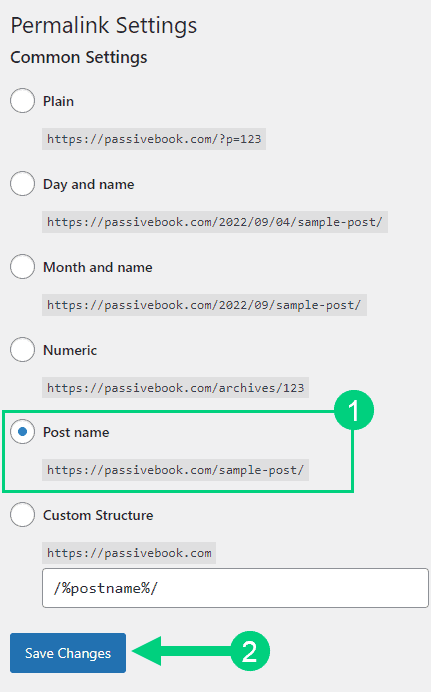
Enable Search Visibility
Chances are you want your blog to show up on Google so people can find you. Go to Settings > Reading in your WordPress dashboard.
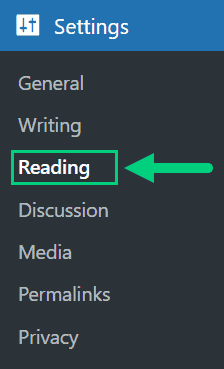
To get search engine traffic, ensure the checkbox “Disable search engines from indexing this site” is Unchecked. You can find this option in Settings > Reading. Most of the time this should be unchecked by default but if it is not, then uncheck it to ensure your site gets traffic from search engines.
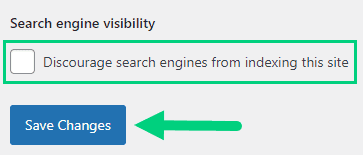
Adjust Comment Settings
Next, you will want to change the Discussion Setting (aka Comments). Go to Settings > Discussion in your WordPress admin area.
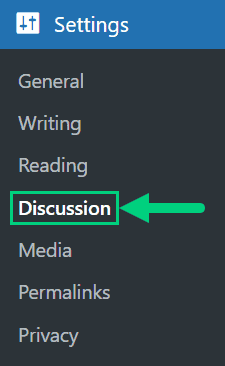
❶ You may want to enable or disable comments on this page. You can also disable pingbacks and enable comment moderation.
❷ You can also set comment approval settings.
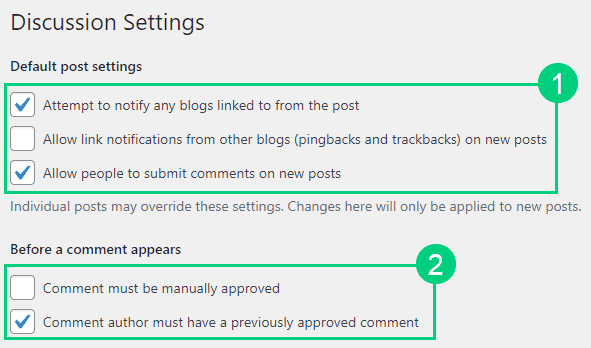
If you want to design your blog further, check out our dedicated guide on blog design which has all our best blog design recommendations.
Create Static Pages
There are a few essential pages that you need to create for your DIY blog before you can start blogging.
Use pages in WordPress to add static content. Go to WP Dashboard > Pages > Add New.
- Write the headline of your content.
- Populate the body content
- Click the publish button.

You may want to create the following pages:
Home Page
Your home page is the first page that your readers see when they visit your website. It is important to make a good first impression, so you should make sure that your home page is well-designed and informative.
Your home page should include the following elements:
- An Introduction to your blog
- A list of your latest blog posts
- Links to your social media
- A lead magnet
- A contact form or email address
You can create a professional home page for your DIY blog using a page builder like Thrive Architect. This will allow you to easily drag and drop different elements onto your home page, customize the size and layout of each element, and more.
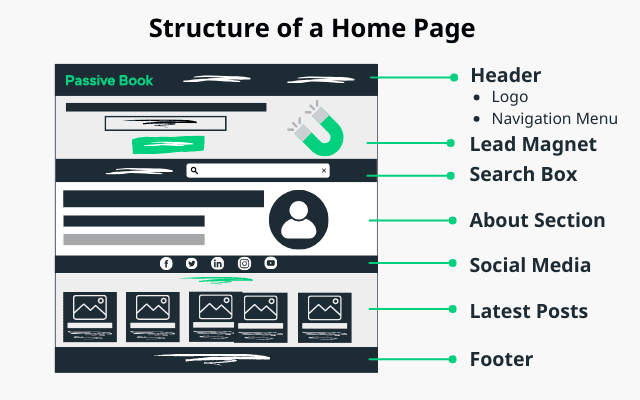
About Page
Your about page is where you tell your readers who you are and what your blog is about. This is important because it helps you connect with your readers and build trust. Your about page should be well-written and informative. You may also want to include a photo of yourself so that your readers can put a face to the name.

Contact Page
Your contact page is where you provide your readers with a way to get in touch with you. You can include your email address, a contact form, phone number, or other contact information on this page.
Use contact form plugins like Fluent Forms to create the form on your contact page.
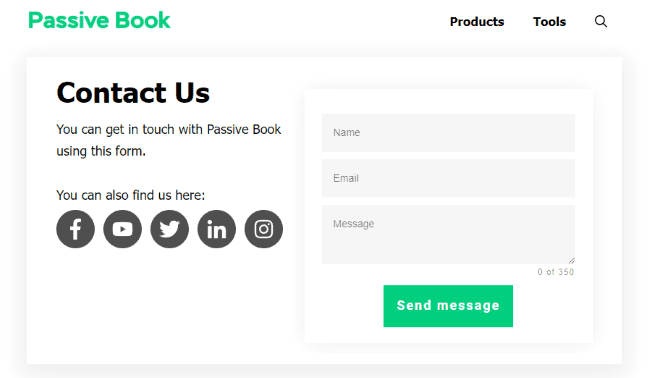
Privacy Policy
Your privacy policy page is where you tell your readers how you collect, use, and protect their personal information. This is important because it helps you build trust with your readers. You should consult a lawyer to help you create a privacy policy that complies with the law.
WordPress generates its own privacy policy for you. But you can also use a tool like Termly to generate your own privacy policy.

Terms of Service
Your terms of service page is where you tell your readers the rules for using your website. This is important because it helps you protect your website from liability. You should consult a lawyer to help you create terms of service that comply with the law.
Use a terms & conditions generator like Termly to create it.
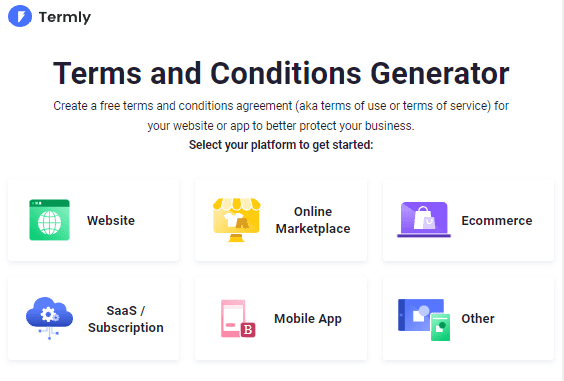
5. Write & Publish Blog Posts
Now that you have your DIY blog set up, it’s time to write and publish your first blog post. To craft the perfect blog post, check out our in-depth guide on How to Write A Blog Post. Here we will go over specific tips for a DIY blog.
1. Brainstorm Topics
You should brainstorm 100 topic ideas for your DIY blog. This will ensure that you always have content to write about in your DIY blog.
The goal is to find topics for your DIY blog that your audience is searching for in Google. The type of content you write on your DIY blog will depend on your specific niche.
There are a few ways to brainstorm specific content:
Look at Competitors
If you want to be a successful DIY blogger, you must constantly come up with new ideas for blog posts. One great way to come up with ideas is to look at the articles your competitors are writing about. This will give you a good idea of what topics your audience is interested in, and it will help you come up with new content ideas for your DIY blog.
You can find your competitors by googling your keyword and looking at the top search results.
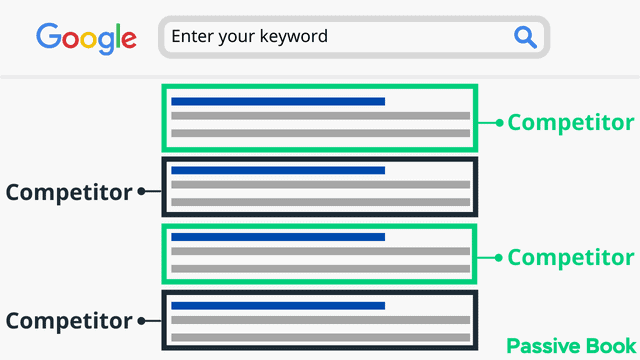
Do Keyword Research
Another great way to come up with ideas for blog posts is to do keyword research. This will help you find keywords that your audience is searching for in Google. You can use a tool like Keywordtool.io to find these keywords.
Enter a keyword into Keywordtool.io and it will give you a list of related keywords. These are the keywords you should be targeting in your DIY blog.
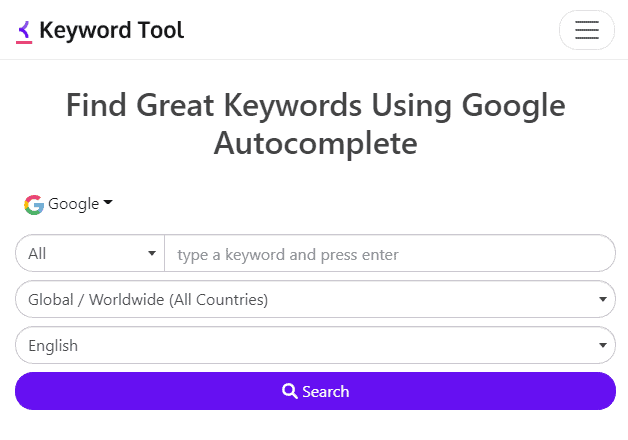
Community & Forums
You can also come up with blog post ideas by looking at communities and forums. These are places where your target audience hangs out, so you know they’re interested in the topics you’ll be writing about.
You can find online communities and forums by googling your keyword and looking for relevant Facebook groups, Reddit threads, and Quora questions.
2. Create an Editorial Calendar
Now that you have a list of content ideas, it’s time to create an editorial calendar. An editorial calendar is a tool that helps you plan, organize, and write your blog posts. This helps you stay on track and ensures that you are writing quality content.
Download Content Calendar Template

Steal our exclusive content calendar template. Have it delivered directly to your inbox:
An editorial calendar should include the following information:
- The topic of the blog post
- The keywords you will be targeting
- The target audience for the blog post
- The date you plan to publish the post
- A brief summary of the blog post
You can create your editorial calendar using a simple Google spreadsheet or using a tool like Trello or Notion.
3. Write a Blog Post
Once you’ve created your editorial calendar, it’s time to start writing!
Remember to keep your target audience and keywords in mind as you write.
How-To Posts
One of the most popular types of content in DIY blogs is how-to posts. These are posts that teach your audience how to do something.
How-to posts are popular because they are extremely helpful and informative. They provide value to your audience, which is what will keep them coming back to your DIY blog.

When writing how-to posts, it’s important to be as detailed as possible. You want to make sure your audience feels confident they can complete the task after reading your how-to post.
To write a great how-to post, follow these steps:
- Choose a topic
- Research the topic
- Write an outline
- Start writing your how-to post, breaking it down into clear and easy to follow steps
- Include images or video to help illustrate your how-to instructions
- Edit and proofread your how-to post before publishing
Tutorials Post
These are step-by-step guides that show readers how to complete a specific DIY project or task.
Example titles might include:
- “How to Build a Wooden Bookshelf”
- “DIY Guide to Painting Kitchen Cabinets.”
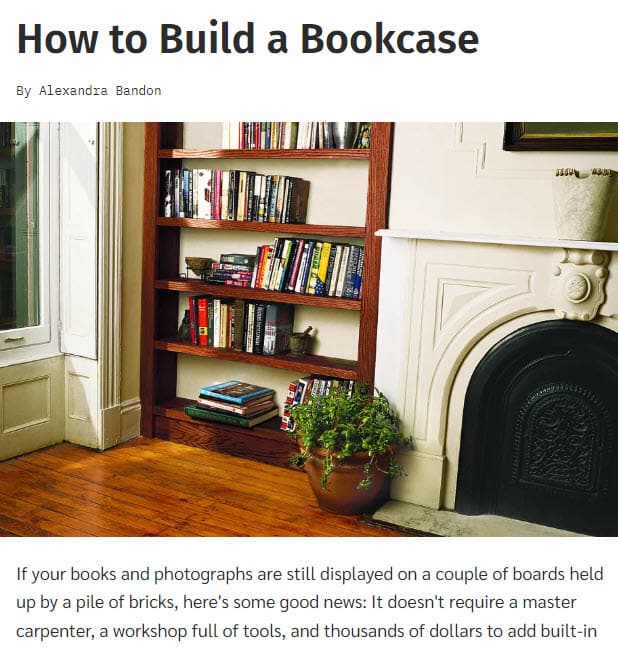
When writing a tutorial, it’s important to be clear and concise and to include plenty of photos or illustrations to help guide the reader through the process. Make sure to also include a list of tools and materials that the reader will need, and consider including a video demonstration if possible.
Project Round-ups Post
These are posts that showcase a series of related projects or tutorials, often with links to the full instructions. For example: “10 Easy DIY Home Decor Ideas.”
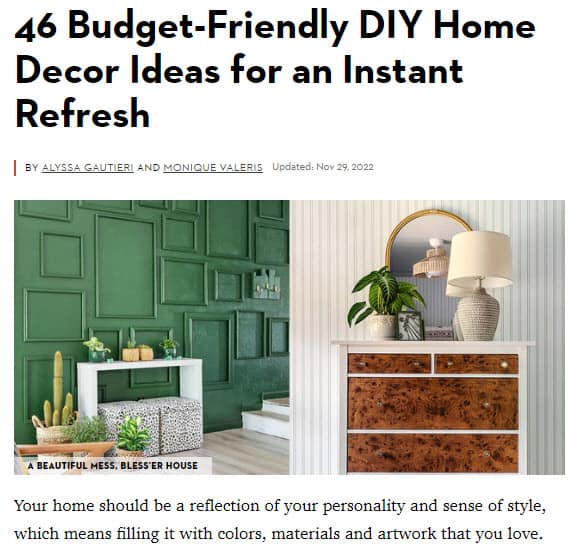
When writing a project round-up, it’s important to provide a brief overview of each project and to include links to the full instructions. Consider organizing the projects by theme or difficulty level to make it easier for readers to find what they’re looking for.
Product Reviews Post
If you’re using specific products or tools for your DIY projects, you could write reviews of those products to help your readers make informed purchasing decisions.
Example posts might include:
- “Our Favorite Cordless Drills for DIY Projects”
- “Review of the Top-Rated Pressure Washers.”
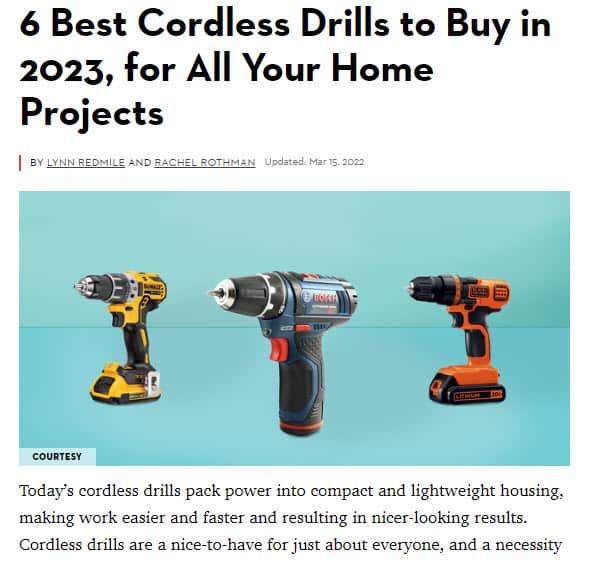
When writing a product review, it’s important, to be honest and objective and to provide as much detail as possible about the product’s features and performance. Consider including both the pros and cons of the product and consider comparing it to similar products on the market.
Home Improvement Tips
These could be general tips for maintaining and improving different parts of the home, such as the kitchen, bathroom, or yard.
Example posts might include:
- “5 Quick and Easy Ways to Save Energy in Your Home”
- “10 Tips for Maintaining a Healthy Lawn.”

When writing a home improvement tip post, it’s important to focus on practical, actionable advice that readers can easily implement. Consider including before-and-after photos or examples to help illustrate your points.
Before & After Posts
These are posts that show the transformation of a space or project, with “before” and “after” photos to illustrate the progress.
Example posts might include:
- “Before and After: Our Kitchen Remodel”
- “DIY Bedroom Makeover: From Drab to Fab.”

It’s important to include plenty of high-quality photos to show the transformation, and to provide details about the process and any challenges you faced. Consider including a budget breakdown and a list of materials and tools used.
Personal Stories Post
Share your own experiences with DIY projects, including any challenges or successes you’ve had.
Example posts might include “My First DIY Project: Lessons Learned” or “Overcoming DIY Anxiety: How I Got Started.”

It’s important, to be honest and authentic and to share any lessons or insights that you gained from your experience. Consider including photos or videos to help illustrate your story.
Q&A Posts
You could also write posts that answer common questions or concerns that your readers might have about DIY projects.
For example: “Frequently Asked Questions About Painting Kitchen Cabinets”

Do your research and provide detailed, accurate answers to the questions you choose to address. Consider organizing the questions and answers into a list or FAQ format to make it easy for readers to find what they’re looking for.
Write 5x Faster With AI
You can write your new blog post at 5x speed using the AI writing software Jasper. I was able to write over a hundred blog articles in 3 months using Jasper. This blog article you are reading right now was written with the help of Jasper. AI will not only help you write blog posts fast but also with higher quality.
Jasper can write plagiarism-free blog content, articles, social media content, emails, and ad copy. All you have to do is provide a few inputs on what you want and Jasper will do all the hard work of creating the blog content for you. No more writer’s block.
Check out the video below to see Jasper in action:
Try Jasper for free using the links on this page and get 10,000 bonus credits you can use to start writing your first articles.
Once you sign up for Jasper I recommend you spend some time going through the tutorial videos in the Jasper Bootcamp to truly unlock the power of this amazing software.
Check out our guide on How to Write a Blog Post Fast in 15 mins Without Losing Quality for more tips to write fast.
Outsource Writing
If you don’t have time to write your DIY blog posts, you can always outsource the writing to a freelance writer.
There are a few places you can find freelance writers:

4. Add Images
Images are an important part of any DIY blog post. They help break up the text and make your posts more visually appealing.
When adding images to your DIY blog post, be sure to add alt text. Alt text is a brief description of an image that is used by screen readers for visually impaired people. But it is also used by search engines to understand what the image is about.
You should be wary of using stock photos if you want your blog to be as personal and authentic as possible. Try to use photos you have taken yourself. You don’t need expensive equipment and can get started with a simple smartphone camera.
While stock photos can be a great resource, they often feel too staged or fake. But if you don’t have any good photos of your own, there are a few places you can find free stock photos:
Free Options: Pixabay, Pexels, Upsplash
Paid Options: Deposit Photos, Shutterstock, iStock, Getty Images, 123rf.
You can use Canva to edit images and create graphics for your DIY blog. Canva is a free online design platform that’s easy to use, even if you have no design experience.
If you want access to a library of high-quality stock images, you should upgrade to Canva Pro. With Canva Pro, you can download unlimited stock photos for free. Plus, you’ll have access to a library of over 1 million templates and tools.
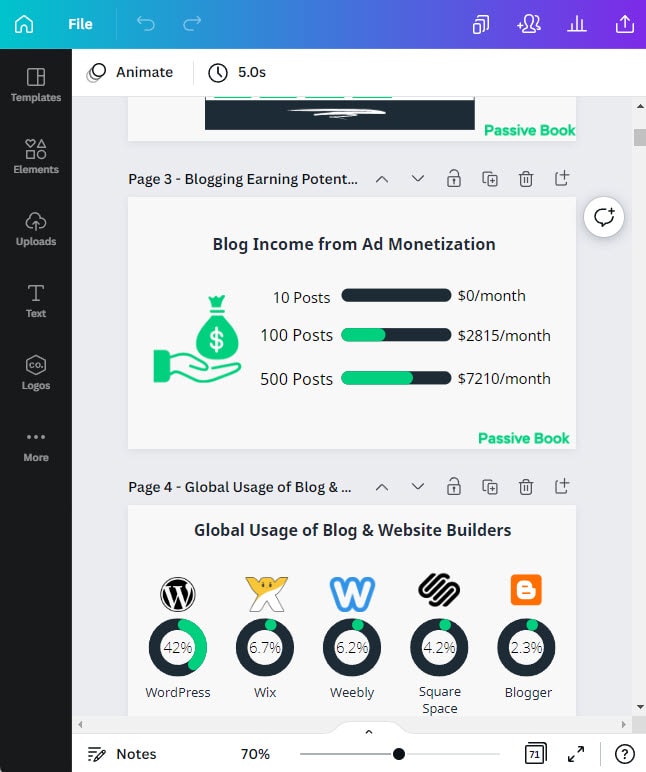
6. Promote Your DIY Blog
Once your blog posts are published, it’s time to start promoting your blog to get blog traffic. There are a few effective ways you can promote your DIY blog:
Search Engine Optimization (SEO)
SEO is the practice of optimizing a website for Google search. When you optimize a website for SEO, you are improving the site for Google’s search engine results pages (SERPs).
There are a few things you can do to improve your SEO:
- Add keywords to your blog posts and website
- Use internal links to link to relevant pages on your site
- Add meta descriptions and titles to all of your blog posts
Many factors go into SEO, and it can be a bit confusing to figure out where to start. You can master the more advanced SEO tactics by checking out our SEO Resources.
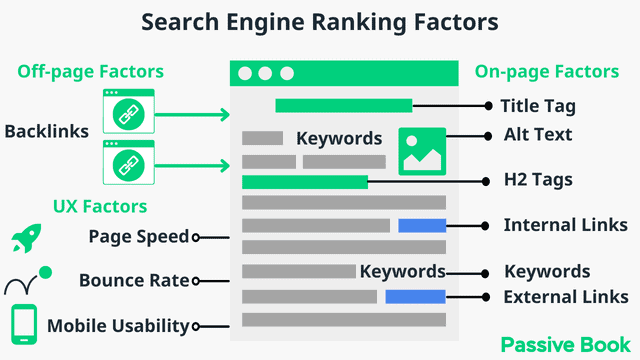
You can ensure you get the basics of SEO right, by completing the recommendations given by the RankMath plugin.
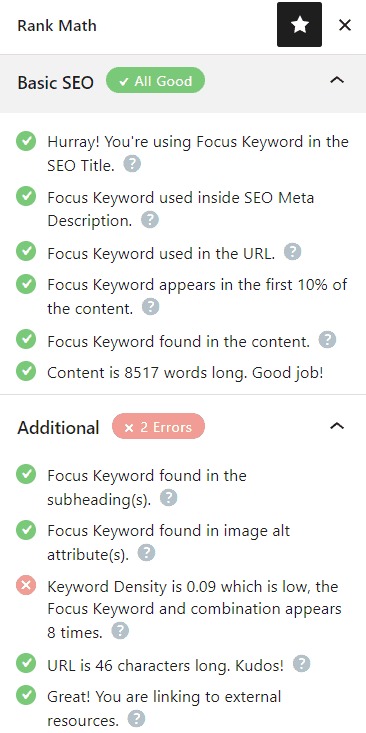
Email Marketing
Email marketing is a great way to promote your blog posts. With email marketing, you can build a list of subscribers who are interested in the topics of your blog posts.
You can then send them an email each time you publish a new blog post. This will ensure they see your latest blog post and are encouraged to read it.
To get started with email marketing, you need to create opt-in forms to collect email addresses. You should then use an email marketing service to send emails and manage your subscribers.
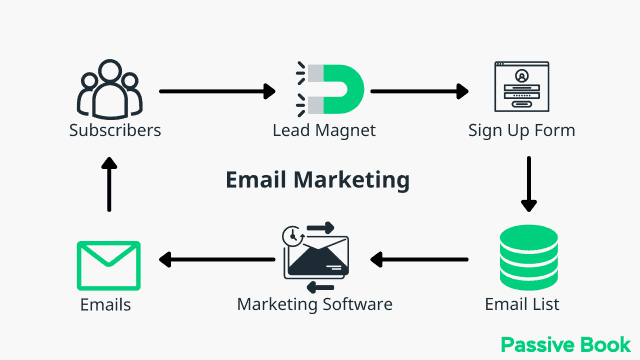
You can use the Thrive Leads plugin to build opt-in forms to collect email addresses. You can then connect the opt-in form to an email marketing service like Active Campaign to send out the emails.
Check out our Email Marketing resources to learn more.
Social Media Marketing
Another great way to promote your DIY blog is with social media marketing.
With social media, you can share your blog posts on various platforms. This will help you build an audience and drive traffic to your blog posts.
To get started with social media marketing, you need to create social media accounts for your blog. Once you have created the accounts, you can start sharing your blog posts on social media.
Pinterest and Instagram are the most effective social media platforms to drive traffic to your DIY blog.
Guest blogging
Another great way to promote your DIY blog is with guest blogging.
Guest blogging involves writing articles for other blogs in your niche, and promoting them on your own blog. This will help you build relationships with other bloggers and drive traffic to your blog posts. You can link to your blog inside the guest post and in the author bio. Here is how Kristi Hines promotes her blog.

To get started with guest blogging, you should reach out to other bloggers in your niche and offer to write a guest blog post for their blog.
You can also promote your guest blog post on your own blog, by emailing your list of subscribers.
7. Monetize & Make Money
Once you have built up an audience for your DIY blog, you can start to monetize your blog. There are a few different ways you can monetize your blog:
Advertising
Advertising is a common way to make money from a DIY blog. With advertising, you sell space on your blog to businesses who want to promote their products or services.
Although advertising can be a great way to make money from your blog, it can also be a bit of a hassle to manage.
If you want to advertise on your blog, you should use an Ad Network to manage your ad placements.
To start advertising on your blog, you can sign up for an ad network like Ezoic (they pay more than Google Adsense). When your blog starts getting more than 100,000 page views a month you can monetize with Adthrive.
| Ad Network | Earnings Per 1K Impressions (EPM) | Monthly Traffic Requirement |
|---|---|---|
| Ad Thrive | $13 | 100,000 |
| Ezoic | $3 | 10,000 |
| Media.net | $1 | – |
| Google Adsense | $1 | – |
Affiliate Marketing
Another common way to monetize a DIY blog is with affiliate marketing. With affiliate marketing, you partner with other businesses that provide products or services related to your niche.
You then promote these products and services on your blog and earn commissions when you drive sales for these businesses.
Place the affiliate links provided by the program in your blog post. Whenever someone clicks your affiliate link and makes a purchase, you will earn a commission.
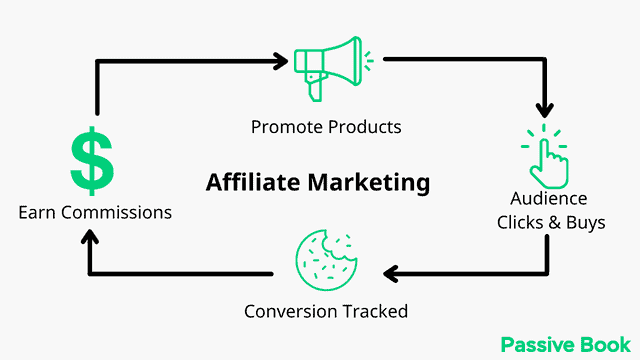
To get started with affiliate marketing, you should join an affiliate network like Amazon Associates. These networks will provide you with a range of products and services to promote on your blog.
Digital Products
You can also monetize your DIY blog by selling digital products. Digital products are items that you sell online, such as ebooks or online courses.
These types of products can be an effective way to make money from your blog since there are very low costs involved in creating and selling them.
You can use Teachable if you want to sell video courses. Your students will have a dedicated course members area and a community system to ask questions and interact with each other. If you only want to sell eBooks, you can use SendOwl which lets you sell your digital products and eBooks for free.

Physical Products
You can also monetize your DIY blog by selling physical products. With this approach, you create and sell physical goods, such as handcrafted jewelry or arts and crafts supplies. You can also sell your products through Etsy.
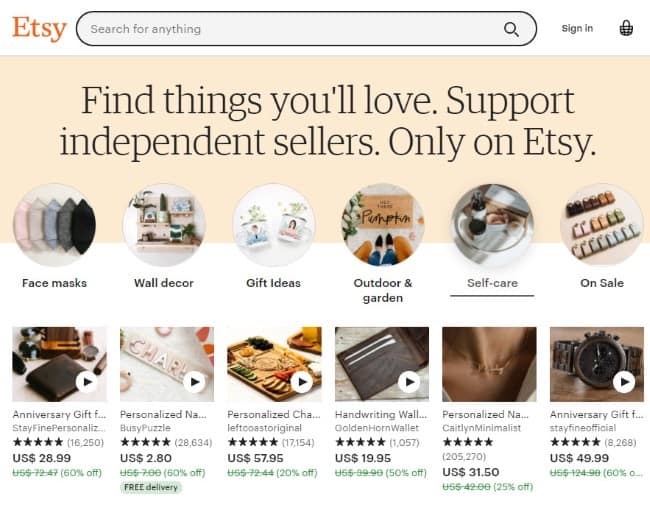
This is an effective way to make money from your blog, as it is much easier to create and sell physical products than digital ones.
Sell Services
Another way to monetize your DIY blog is by selling services. Services are a great way to make money from your blog, as they are usually high-value and have a high-profit margin.
If you have any services that you can offer, you can list them in your DIY blog and promote them in your blog posts. You will get a list of qualified leads that you can work with.
Sponsored Posts
Lastly, you can monetize your blog by writing a sponsored post. Sponsored posts are articles that are written by businesses to promote their products or services.
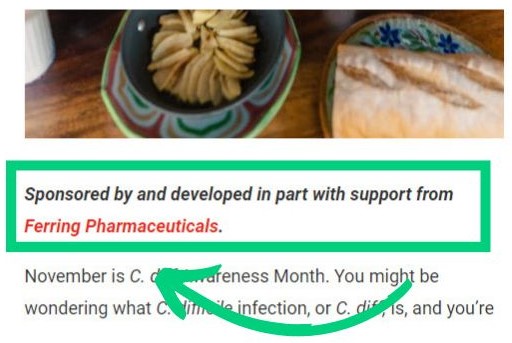
You can write these articles and get paid for them. To get started with sponsored posts, you should reach out to businesses in your niche and offer to write a sponsored post for their product or service.
FAQ
Here are a few frequently asked questions:
Can DIY blogs make money?
Yes, DIY blogs can make money through a variety of methods, such as advertising, affiliate marketing, sponsored posts, and selling digital or physical products.
What is DIY blogging?
DIY or “do-it-yourself” blogging, is a type of blog that focuses on sharing how to guides and tutorials for all kinds of DIY projects. The blog typically has tutorials to create, build, modify, repair, or decorate things by oneself without help from expert professionals.
How can I promote my DIY blog?
There are many ways you can promote your DIY blog to increase traffic and engagement. Some effective strategies include guest blogging, email marketing, social media promotion, and using SEO techniques to improve how your blog ranks in search results.
What are some tips for starting a successful DIY blog?
Some key tips for starting a successful DIY blog include choosing the right niche, registering a domain name and setting up WordPress, writing high-quality content regularly, and promoting your blog through email marketing, social media, and guest blogging.
Can I monetize my DIY blog with a membership site?
Yes, you can monetize your DIY blog by using a membership site model to offer exclusive access to premium content for a monthly subscription fee. This may require some additional investment in website hosting and development tools.
What is the best way to get started with creating a successful DIY blog?
The best way to get started with creating a successful DIY blog is to choose a niche topic that you are passionate about and that you feel you can write about in a helpful and engaging way. Once you have chosen your niche, register a domain name and set up WordPress.
Start writing high-quality content regularly and promoting your blog through email marketing, social media, and guest blogging. You can monetize your blog through advertising, affiliate marketing, sponsored posts, or product sales.
By following these steps, you will be well on your way to creating a successful DIY blog that can make money for you.
How much traffic does a successful DIY blog need?
A successful DIY blog will have at least 30,000 visitors per month to generate a full-time income from ads. However, you can start making money with a lower traffic amount if you monetize with affiliate marketing or your own products.
Do I need to be an expert to start a DIY blog?
No, you do not need to be an expert to start a DIY blog. However, it is helpful if you are passionate about your niche and have some knowledge or experience in the topic. With a good strategy and consistent effort, you can create a successful DIY blog that will help you make money online for years to come.
How often should I post on my DIY blog?
It is recommended that you post new content to your blog at least once a week to keep your audience engaged and coming back for more. If you are just starting out, you may want to post 2-3 times per week until you build up a consistent readership.
What Next?
Are you ready to become a DIY blogger?
DIY can be a fun and rewarding hobby, but by blogging it can also be a great way to make money on the side.
We hope this guide showed you how to start a DIY blog. You now have everything you need to start a successful blog.
If you have any questions as you set up your new blog, leave a comment below so we can help you out.
Have you started your DIY blog yet? What type of DIY blog are you going to start? Let us know in the comments.
Share this post with your friends & followers:
